If your motor is hot to the touch it may raise the thermometer’s mercury as well as red flags. The excessive heat produced by your motor is a sign of inefficiency and symptomatic of motor damage. In this blog post we will walk through common signs, causes and fixes to an overheating motor.
Let It Breathe
A motor that cannot breathe is a motor that cannot perform. Because this is an electric motor we may forget that it needs ventilation for it to function efficiently. An internal combustion engine requires fresh air to aid in firing its cylinders; whereas an electric motor requires air to keep it within an optimal operational temperature. If a motor begins to overheat, it can cause damage to the motor’s internals, shortening its life. As stated before, the generated heat is wasted energy being burned off before it can be put to good use.
These vents are a motor’s lungs. It breathes in air to keep the copper windings and essential electrical parts cool. Stuffy pool rooms without sufficient air venting can stifle a motor, rendering a death sentence. Other common causes of improper ventilation are bushes and undergrowth that crowd a motor, suffocating the crossbreeze that aids in a motor’s cooling.
The Fix: If you have an enclosed pool room make sure ventilation of the room is open and active. It may be as simple as leaving the door open or flipping open a register vent. For encroaching greenery, do the necessary trim back of branches and weeds during lawncare.

Low Voltage = High Temperature
Did you know that unusually low voltage can raise the operational temperature of a motor? At first glance, this fact seems counterintuitive, but it is true. If the applied volts are 10 percent lower than the motor’s nameplate voltage, the motor will overheat and lead to a premature failure.
A pump motor requires a set voltage and current threshold to run properly. If either one of these ingredients is out of line, the motor will lean heavily on the other to compensate. When a motor is set for 115 volts but only able to draw 95 volts, it compensates by drawing more amps. The increasing amp draw raises the copper windings’ temperature which is the cause of your motor acting like an Easy Bake Oven. Copper is a great conductor but it is not a durable metal where excessive heat is a concern. Prolonged exposure to overheating will damage the copper windings and the varnish finish rendering it useless. A rebuild of the motor is possible but still costly.
Other signs of low voltage are continuous start capacitor failure and slow motor acceleration. If your motor makes a sound similar to a roller coaster’s slow ascent then sudden quick rev, your voltage may be the cause. This is a sign the motor is unable to gain the necessary charge to “kick-start” so it does a slow rolling start. The scenario is similar to a manual gear car being push started after a stall. If your motor’s start capacitor is always on the fritz, chances are it is not the part but the voltage being sent to it. The lower voltage causes the capacitor to overwork and eventually fail.
The Fix: For you DIYers out there, Test Your Pool Pump Motor with a Voltmeter to the electrical leads providing the charge to the motor. If it is outside of the 10% comfort zone then we have found the problem. Have a qualified electrician check your home’s power grid for other appliances or pool equipment siphoning volts. If this does not find the cause you will need to contact your electric company to have them survey your power source.
Impeller Overload
Have you recently replaced your motor with a lower HP and have noticed the new motor is overheating? Ask yourself this question, did I replace the impeller too? If the answer is no then impeller overload could be the source.The step of reducing a pump’s horsepower is taken to lower flow rate but more commonly is used to lower energy consumption. A common mistake made by professionals and DIY-ers is forgetting to change the impeller when reducing a motor’s HP.
When we think of a pump pulling and pushing water, we may believe a motor’s horsepower is the only thing affecting the pump’s flow rate. This is not true. We forget about the impeller which is the real force behind the pump. The impeller is a vented disk screwed to the motor’s shaft tip. Its purpose is to transform the spinning power of the motor into water pulling force to circulate the pool. I hate to use another car analogy but it is to the pump motor what the transmission is to a car engine. The engine can rev til its heart’s content but if it does not have a transmission to transform its torque to usable force, it is all for naught.
Theory and practice state that the larger the impeller, the larger the motor needed to spin it. The forces of drag caused by the water demand a higher horsepower to produce the torque needed to maintain 3450 RPMs. The funny thing about impellers is that they do not know nor care that you switched a 2 HP motor for a 1.5 HP. That impeller is going to try to pull the same amount of water as before, leaving that smaller motor to overwork, heat up and go kaput.
The Fix: If reducing the motor horsepower on a pump be sure to switch out the impeller as well. If you are unsure how to replace the impeller or which impeller to buy, give our techs a call at 877-372-6038.
Impeller Friction
An impeller can take a walloping during its tour of duty in a pump. It is up against extreme centrifugal force, water dynamics and the odd debris smashing against its face. These hazards of the job can lead to a scoured, cracked or broken impeller. A symptom of this can be one of two things. First, a sound of churning debris inside of the pump, like a bingo ball hopper filled with marbles. Or second, an impeller can bend or skew causing it to rub against the pump’s diffuser or housing. The major symptoms are a whirring, grinding noise or a hot motor. The heat is caused by an overworked motor attempting to compensate for the extra drag.
The Fix: There is no work-around solution for this; the impeller must be replaced as soon as possible. For guidance on what that process entails, have a look at our how to guide: How to Replace a Pool Pump Impeller or How to Clean a Pool Pump Impeller
Ok, that is it folks. If you are still flustered, flummoxed, or flabbergasted by the world of overheating pump motors, do not hesitate to call us at 877-372-6038.

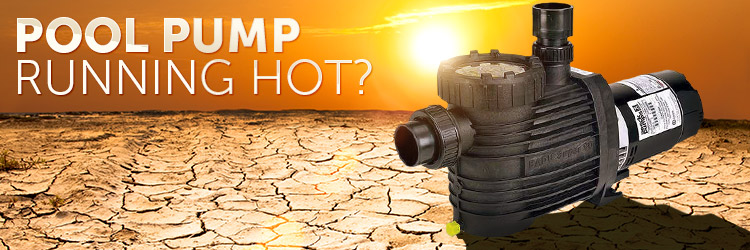
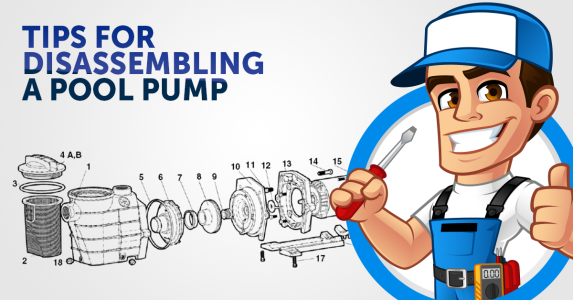
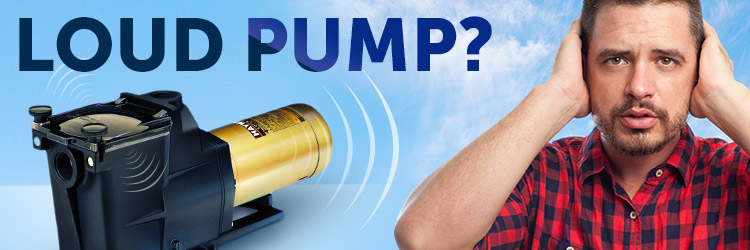
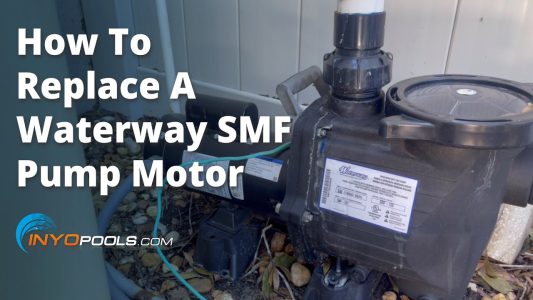
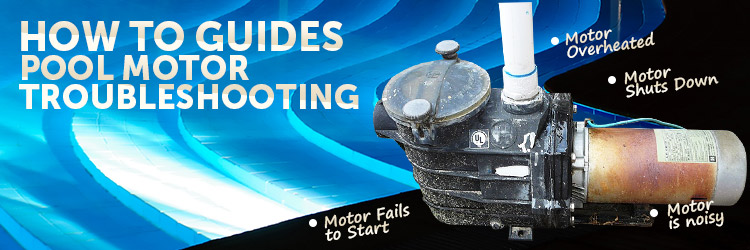






Hi I have a 1hp aquapro dual voltage sprinkler pump. Wired at 230 volts on a tandem 20amp breaker it runs extremely hot and has a huge drop in power. I rewired to run at 115 volts with 20 amp breaker and it runs great. Any suggestions. Its on 12awg wire.
I mention in the article that low voltage can create higher temps. Did you do any troubleshooting of the things I mentioned in the article before switching to 120-volts?
Also, if it is working fine on 120-volt now, I would leave it hooked up as such.
Hello i have a 1hp pump that shuts down when it gets too hot.any idea what might be wrong here?
I have a 5 hp pacer pump that shutting off at the starter switch. the motor is very hot to touch. any suggestions. The pump runs 24 hrs. a day.
Not familiar with a pacer pump, but the causes for overheating motor mentioned in the article may apply.
Also, electric run very hot and are not meant to be touched when operating. And if there is an issue with the motor’s circuit or bonding you can receive a very painful electric shock.
I just replaced the pump motor. So………it is hot to the touch. So that’s normal?
Yes, that is normal. Motors are for pumping, not for touching.
Matthew,
I just replaced my PSR seal today. Hooked the pump back up and ran I for about 30min to see if would hold. The motor was very hot to touch and starting leaking again. Do you think it time to replace the pump?
Pumps aren’t meant to be touched. They are electric motors, which naturally create heat as they operate, encased in metal sitting outside in the summer heat.
I would recheck to make sure you installed the seal correctly. It shouldn’t be leaking. Replacing the whole pump would fix the leak, but a little overkill at this point and time.
Matthew, hello I have a quick question for you. I am on my 3rd pump motor since I have had my pool(7th season). I have a 22,000 in ground pool. original motor was 1 HP, the 2 since are 1.5 HP, electirc is 220. I recently built a green protective semi enclosure. I believe I left decent opening for good air flow. I run pump 12 hours on and 12 hours off(at night). My pump still runs hot to touch. I am at wits end. I don’t want this trend of buying new pumps every three years to continue. I can send pictures, your help/imput would be greatly appreciated.
First, it is an old saying but it applicable in this situation, “they don’t make them like they used to.” The motors made a decade or more ago, lasted a good bit longer than the present day versions. I’m not sure if it is the fault of the lower grade components or the cheap labor that is putting them together, but it is true. Covering the motor can protect the motors, but the cover is not going to fix any quality issues.
As for the motor being hot to the touch, that is normal. Electric motors are not meant to be touched because if not bonded correctly it could shock you and one, the casing could be 150 degrees. Electric motors create heat, that is just a byproduct of the motor’s process. We actually cover this subject in a Poolside Chat: Is it normal for my pool pump motor to be hot?
My ball bearings are going in Motor horrendous sound I need to run filter to chlorinate pool..while waiting for new motor what’s 5he worse that could happen
Other than the agonizing noise, there shouldn’t be any other worse things that should happen
And the low voltage was the culprit. Couple that with 95 degree heat and it’s a recipe for a dead motor. We have the Hayward pool pump running on an extension cord until the electrician can dedicate a line. And the electrician made the extension cord! Result is the motor running hot and I’m not about to spend another $300 on this pool. It’s a brand new motor. Lesson learned. Thank you for the tip.
Thanks these tips were perfect
Glad to help out!
My eletricial motor is vs motor,it drop speed during the day and pick up at night.why
The variable speed motors can change speed if you schedule it on the mounted control. Have you checked the motor’s schedule to make sure you aren’t confusing the schedule for a motor malfunction?